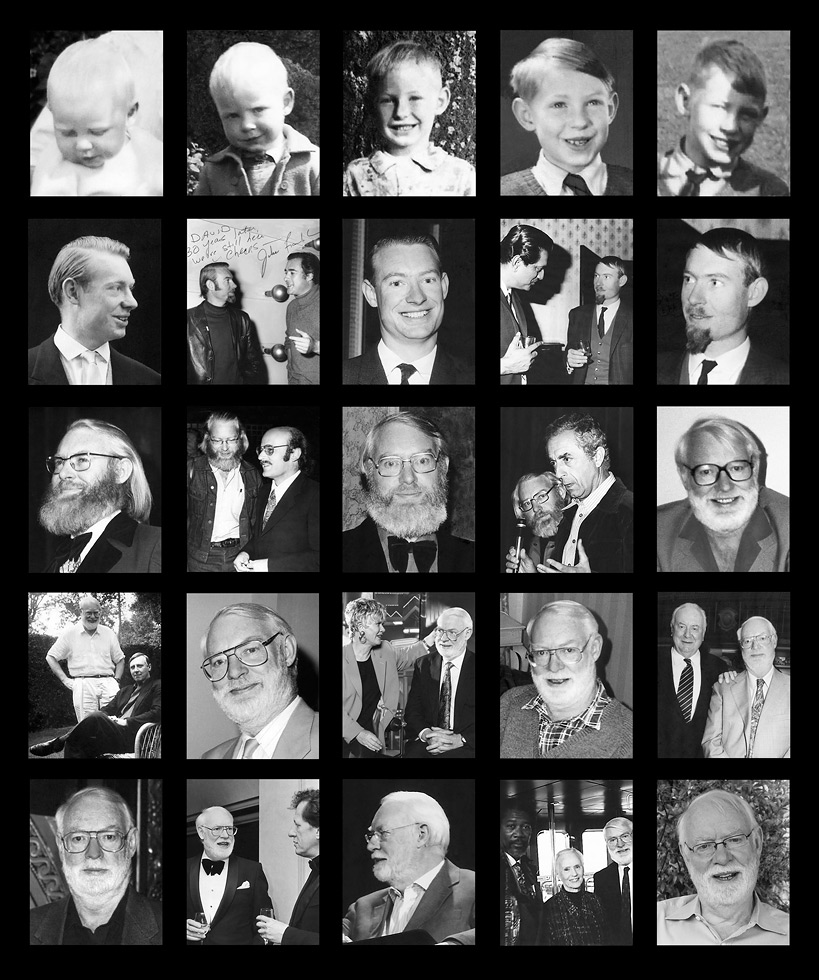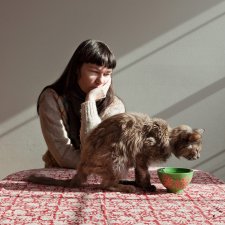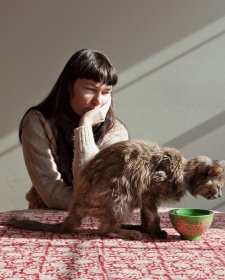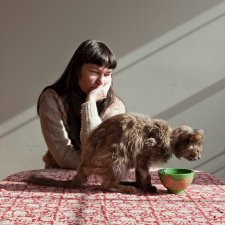How do you define your practice?
Photographer and printmaker. I take photographs and also use a computer and Photoshop to manipulate some images, more so with my printmaking, but also with my composite photo grid portraits and sometimes also with straight photographs.
Do you have a website or are you represented on a website?
No I don't, but I intend creating one as I think is a useful thing to have. I am represented for my printmaking in the Sydney Printmakers website.
How would you describe your relationship to the subject?
I know of David Stratton from his TV program with Margaret Pomeranz, and as a public figure who ran the Sydney Film Festival when I first came to live in Australia in 1982. I thought he chose interesting films which made people think; not mainstream stuff that would come to the suburban cinemas. He appeared to be offering Film Festival goers a wide range of wonderful, experimental and often challenging films from all over the world, and not a preview of what would come to local cinemas anyway. I met him in person recently, through a mutual friend, to borrow his photographs for my project, and to take the last photo in the composite photo portrait I made of him. He struck me as being a bit shyer than the public figure I saw on TV, but very engaging and interested in everything.
Was the photograph a result of a constructed, fabricated or candid encounter? Please describe.
The composite photo grid is the result of a constructed work. I began with the grid and then scanned the images to the required size. After that I adjusted and manipulated the images to make them 'match' one another visually. I then sent them to David to check the chronological order I had put them in, and to ask if he was happy with the overall image. In selecting the photographs to use I had a large choice of images of David with a lot of famous actors, directors and producers, other people involved in film making and film festivals. I asked him if there were any particular photographs he wanted me to use, or any people he wanted me to make sure I included. He said that the choice was mine, so I selected them.
What are the ideas or themes underpinning your portrait?
I wanted to make a 'whole life' portrait of David Stratton, showing him from babyhood to childhood, adulthood to the present. The idea was to use a range of photographs to show aspects of David's past and present. In using multiple images I show how a person grows, matures and becomes the person they are now. I try to show something of the person - what they do or did, what they like, and of course, what they looked like at different times. The grid itself allows me to have some order and unity in the image. It is, very intentional and also refers to proof sheets, which were so much a part of my analogue photographic work in the past. David's portrait is one of about 60 photographs that I have been working on which will be included in my planned exhibition; people from a wide range of backgrounds, ethnicities and countries, which make up Australian society today. I want the viewer, in looking at the photos, to be able to identify with the subject, to interpret the photos, and to react to what they see. I want to show things all people have in common and also those things that make them individuals.
Please describe the technical aspects of your photograph?
I have scanned the photographs of my subjects and adjusted them to fit into the 5 x 5 grid I use. Using Photoshop I have adjusted and 'repaired' many images. In the last space I have put a photograph, which I have taken of the person with my Canon 5d Mark II. Some of the other photographs taken by me were with my analogue Canon ftb camera, made in about 1974.
How was the final print made? Is this print one of an edition?
I made the final image on my computer and saved it on a USB which I took to a COFA's Digital Photo Lab to have the final image printed onto archival paper using archival inks. This print is one in an edition of 15 prints available at this size.
Describe your consideration of scale, mounting and framing in the presentation of your portrait?
For this competition and exhibition I decided to make the image about 100 cm x 83 cm. This is the biggest I have so far printed such an image. I chose to print it large, as I thought that it would look best this size. I had done one A1 size (59.4 x 84cm) and wanted to see if it would stand enlarging to AO size (84 x 119 cm). I wanted it to be read it as a collection of individual photographs of the person, to be looked at separately. I didn't want it to be read as a group of small photos - a proof sheet. I have chosen a simple white frame around the image, which has a white border so that it would not detract from the rather busy image itself.
Who would you nominate as your influences?
The photographers August Sander and Yousuf Karsh, Henri Cartier- Bresson, Elli Weinberg, Peter Magubane, David Goldblatt and artist and printmaker Richard Hamilton (My Marilyn 1965) are my influences in this work.
Do you have any advice for young photographers (eg. students)?
Look at lots and lots and LOTS of what other photographers have done before you. Take lots and lots of photographs. Try and work out what it is you want to say with your photographs. Then see if they are read the way you intend them to be read.














